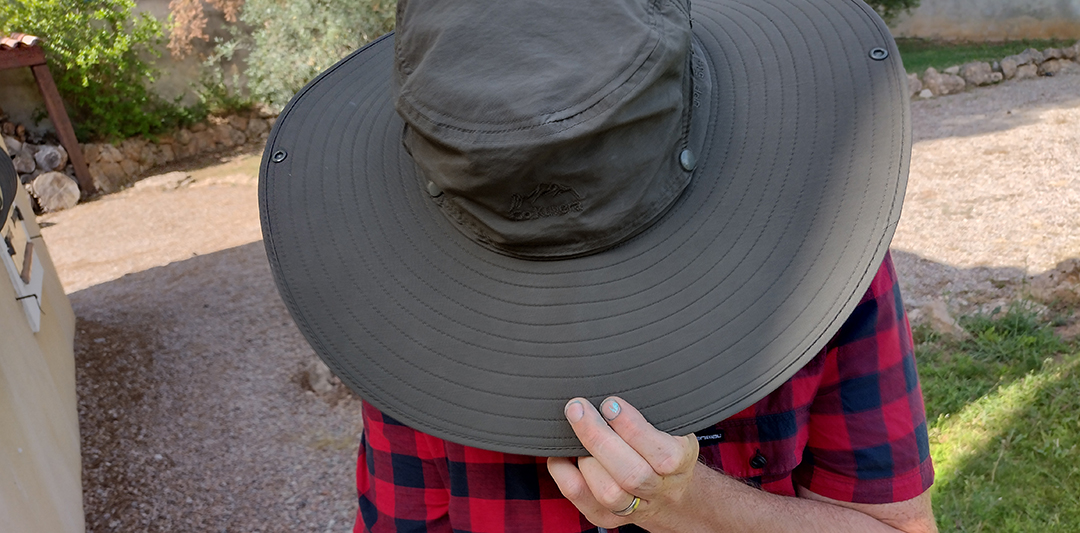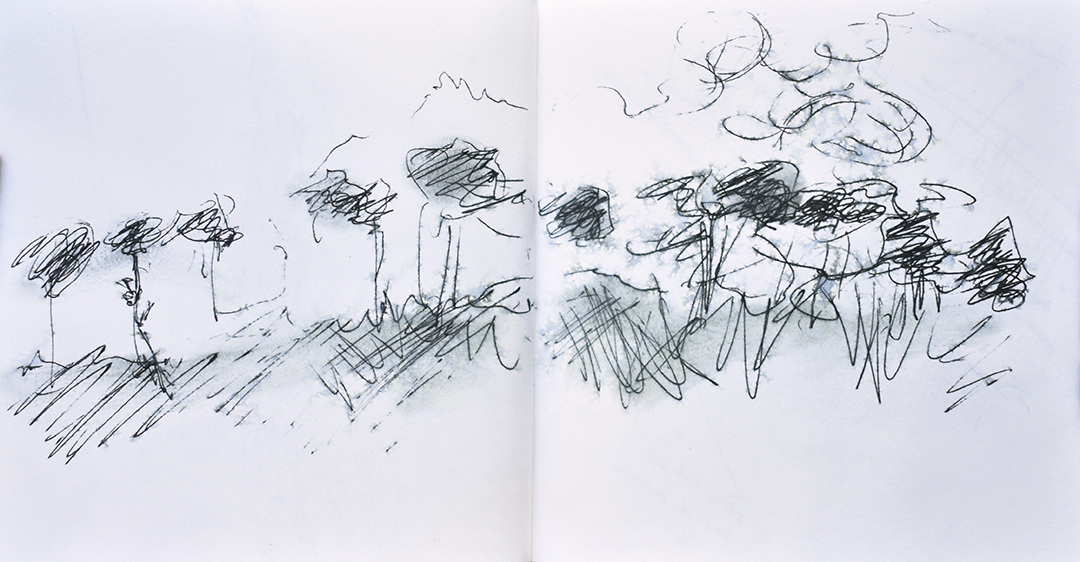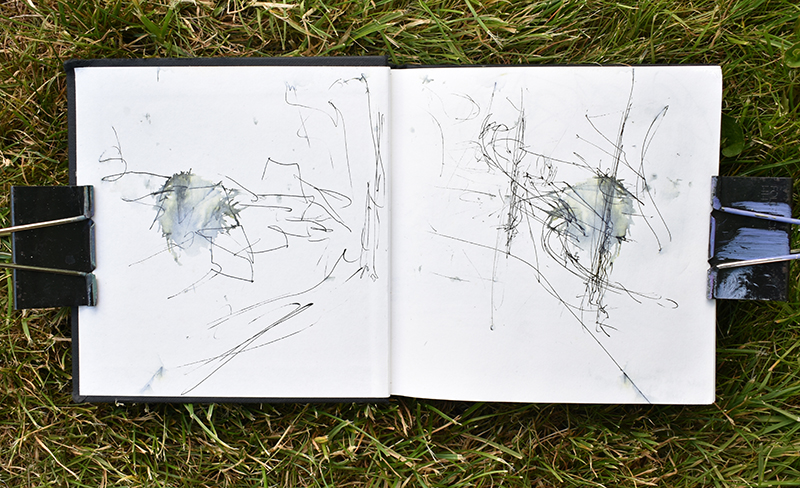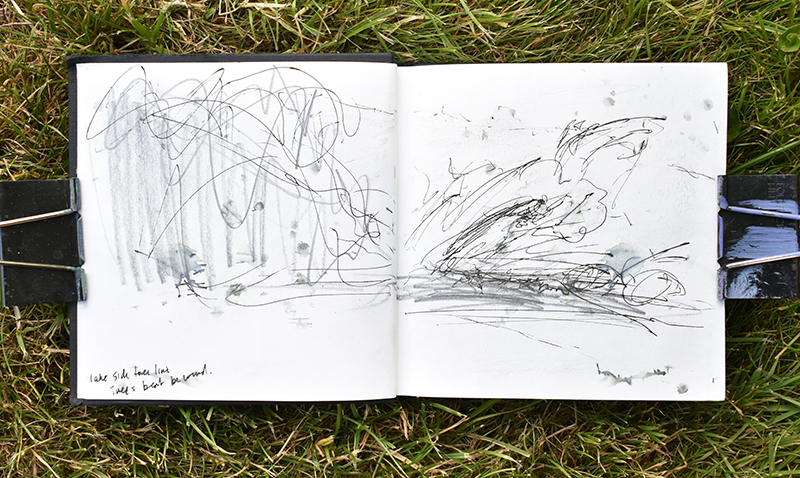The Watcher
I have always admired artists that can sit in public spaces and sketch life, people going about their business. I often wonder how they get away with it? It has always been my experience that people don’t like being looked at, let alone observed and studied long enough to be drawn into someone’s sketchbook.
I can’t recall any other time in my life where I have sat in a cafe on my own with no purpose other than just to be there. I wasn’t waiting to meet someone or killing time before making an appointment. I was making myself be there for the experience. As I sat there I felt very conspicuous, wearing my odd workman shorts with additional pockets hanging on the outside like a tool belt and not to mention my ridiculously over sized brimmed hat, which I had arrived at the cafe wearing but was quick to remove so not to draw too much attention.
Yet people just seemed to accept and pretty much ignore me. I started to almost feel inconspicuous, perhaps I was the weirdo that people didn’t want to draw attention from or maybe my feelings of being overly self-conscious and paranoid in situations like these has been unnecessarily inflicted over the years. As I relaxed and without the distraction of conversation with a companion I found myself people watching, observing the individual worlds orbiting around these small round tables. I was no way near brave enough to start sketching people, nor would this necessarily be something that I would wish to do, nevertheless, I was starting to feel present and able to see how you can almost take yourself out of time and be an observer, if you can keep out of your own head for long enough.

Learning to Stop
So often we find ourselves rushing past points of interest. There is almost a momentary pause in the rush, where you can find yourself distracted from whatever train of thought you were having by an incredible view, a certain perspective or maybe just the way the light is hitting an object. Then a new thought enters your conscious that says “Hey! That’s nice, really nice, interesting in fact, perhaps I should stop and observe it or study it more”
No sooner has this thought been realised, a decision needs to be made. Do you stop or carry on? At this point it’s almost like the left side of your brain, which likes order, labels and logic refuses to pull over, sighting all the dull practical parental augments against the idea;
“I haven’t got time”
“but I’m busy moving my feet forward and that was the plan”
“It’s probably gone now anyway”
“There will be another one”
(Right side: “Yeah, and we won’t stop at that either!”)
I admit that there are times that the left side has a point, like when you are driving a car or being pursed by a swarm of angry bees, but when you are moving at the speed it takes to put one foot in front of the other surely the augments start to wear thin.


I had been exploring a few villages, taking lots of photos but really wanted to start to find some places where I would feel comfortable enough to spend some time to do some responsive sketchbook paintings, maybe somewhere just to start to build my confidence. I found this wonderful turquoise lake and after following it around for quite a while, stopping to take photos which never seemed to look quite right, I arrived at an almost deserted car park. I threw my pack pack on and headed off.
I was about half an hour into my lakeland walk when I realised that I was charging past points of interest with no reason that left-side of my brain could mount an augment against. I didn’t have to be anywhere, no one was waiting on me. So long as I was off the mountain or out of the unfamiliar wooded area before nightfall then I was to give myself permission to start to stop. I coined this term that I quite liked, and started to learn the practice of “Planting My Feet”, just stopping dead, the second something caught my eye and I became conscious that it was interesting. Maybe just to observe for a little longer, make a quick responsive sketch or simply take a photo, for now this was enough, with time this practice would hopefully lead to more impromptu sketchbook painting with my field kit.
One thing that I did notice that was that perspective was everything. Often I found that if I decide to stop too late and retrace my steps back to a spot, the small change in perspective would leave me wondering why I bothered. It was important to be ready for that emergency stop, allow right-side of brian to have both hands on the handbrake.
I hadn’t brought my full field kit out with me and despite finding plenty of places that I could quite happily have stopped and set up easel, I wasn’t beating myself up. This was just an exploration. It was getting late and I’d made some important realisations about my behaviour, observed loads and started to make my first responsive sketches.



Whilst the mosquitoes where having their fun with me I was making plans to return. This was certainly somewhere that I felt I could draw some inspiration from, if only from the colours that I was seeing from the water and the trees on the shoreline, but next time I’ll be packing deet as well as my field kit.

